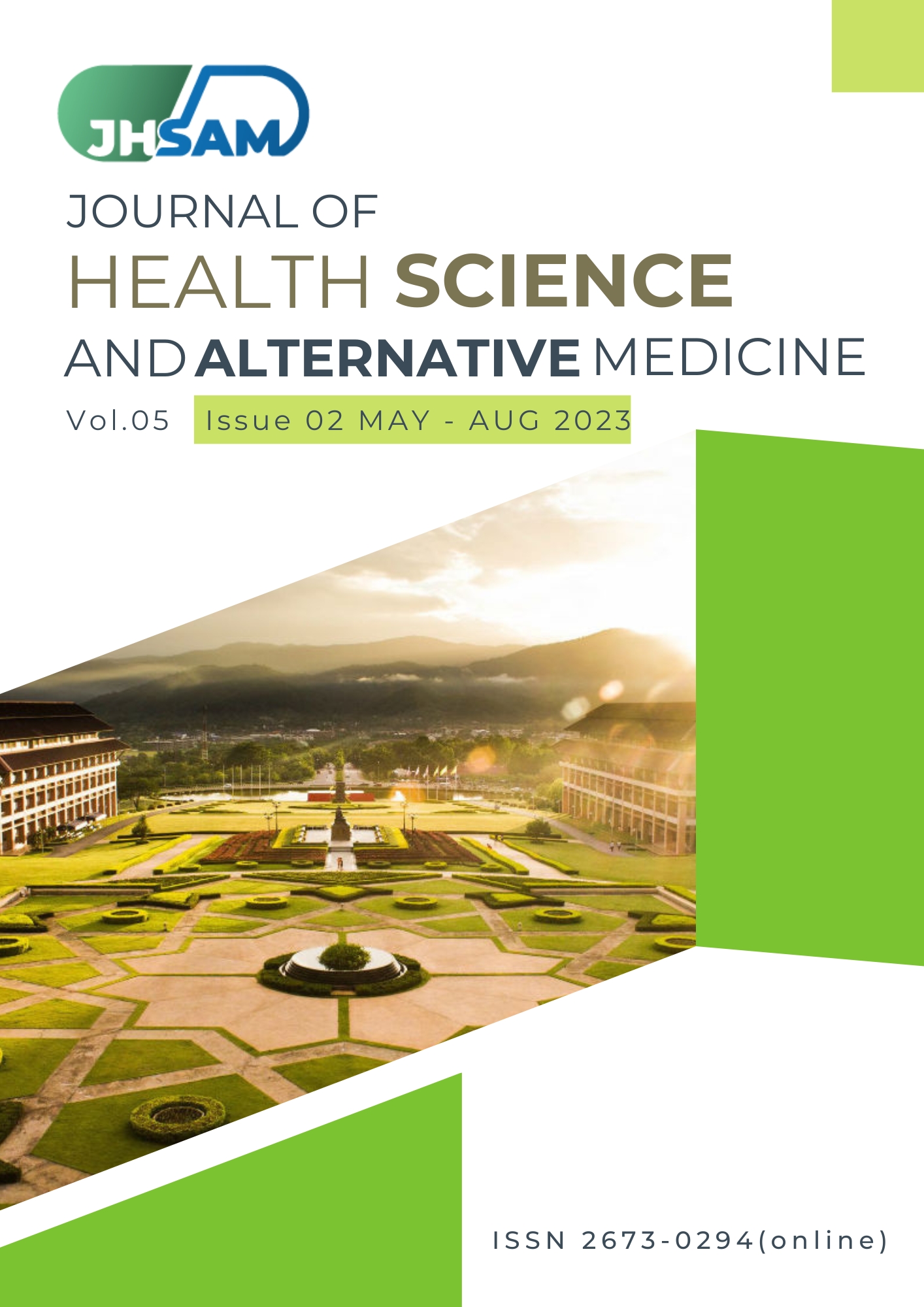Factors associated with sanitation practices preventing diarrhea at household-level in Mogadishu, Somalia
Main Article Content
Abstract
Introduction: Poor sanitation is responsible for the mortality and morbidity related to diphtheria worldwide, particularly under-five years children. The World Health Organization (WHO) estimated that 2.39 billion children under five had diarrhea. Diarrhea is one of the major causes of all child deaths from water contamination, improper sanitation, or hygienic practices. This study aimed to investigate factors associated with diarrhea in homes with children under five years old in Hodan District, Mogadishu, Somalia.
Methods: A cross-sectional study was conducted in the Hodan district of Mogadishu, Somalia, from December 2021 to February 2022. The study participants were randomly selected from 241 households. Descriptive statistics were processed, and logistic regression analysis was used to detect factors associated with diarrhea that related to sanitation practice at a significant level of α = 0.05.
Results: More than 60.6% of the participants lived in multi-family homes, and 81.3% of households lacked access to handwashing facilities. Among 29% of households had poor sanitation conditions. Residences with multi-family homes was associated with diarrhea in children under five years (p-value= 0.004), followed by families whose inhabitants in IDP areas were statistically significant (p-value= 0.001). Family income had a nearly increased risk of diarrhea occurrence in children (p-value =0.001). The households with dependent pit latrines without slabs had (p-value= 0.011). Participants who did not use drinking water treatment were their children highly associated with developing diarrhea compared to those who treated their drinking water at home (p-value=0.003). Families who did not adequately cover their food during preparation had correlated diarrhea in their children compared to those who maintained safe food handling (p-value=0.029).
Conclusion: Providing adequate water, hygiene, and sanitation services in the Hodan district is vital for diarrheal prevention. Awareness-raising at a household level improved sanitation facility, and sanitation practices and encouragement should be scaled up accordingly. Further in-depth studies related to the WASH services gap should also be conducted.
Article Details

This work is licensed under a Creative Commons Attribution-NonCommercial-NoDerivatives 4.0 International License.
JHSAM publishes all articles in full open access, meaning unlimited use and reuse of articles with appropriate credit to the authors.
All our articles are published under a Creative Commons "CC-BY-NC-ND 4.0". License which permits use, distribution and reproduction in any medium,
provided that the original work is properly cited and is used for noncommercial purposes.
References
. Rah JH, Cronin AA, Badgaiyan B, Aguayo V, Coates S, Ahmed S. Household sanitation and personal hygiene practices are associated with child stunting in rural India: A cross-sectional analysis of surveys. BMJ Open. 2015;5(2).
. Behailu Melese, Wondimagegn Paulos, Feleke Hailemichael Astawesegn and Temesgen Bati Gelgelu*. Prevalence of diarrheal diseases and associated factors among under-five children in Dale District, Sidama zone, Southern Ethiopia: a cross-sectional study. BMC Public Health (2019) 19:1235. 2019.
. Agustina R, Sari TP, Satroamidjojo S, Bovee-Oudenhoven IM, Feskens EJ, Kok FJ. Association of food-hygiene practices and diarrhea prevalence among Indonesian young children from low socioeconomic urban areas. BMC Public Health. 2013;13(1).
. Berhe AA, Aregay AD, Abreha AA, Aregay AB, Gebretsadik AW, Negash DZ, et al. Knowledge, Attitude, and Practices on Water, Sanitation, and Hygiene among Rural Residents in Tigray Region, Northern Ethiopia. 2020.
. Kumar A. Households’ Toilet Facility in Rural India: Socio-spatial Analysis. 2017;
. Mihrete TS, Alemie GA, Teferra AS. Determinants of childhood diarrhea among under-five children in Benishangul Gumuz Regional State, North West Ethiopia. 2014;
. Gessesse DN and Tarekegn AA. Prevalence and associated factors of diarrhea among under-five children in the Jawi district, Awi Zone Ethiopia, 2019. Community based comparative cross-sectional study. Front. Pediatr. 10:890304. doi: 10.3389/fped.2022.890304. 2022.
. Sahiledengle B, Alemseged F, Belachew T. Sanitation practice and associated factors among slum dwellers residing in urban slums of Addis Ababa, Ethiopia: A community based cross-sectional study. 2018.
. Id SY, Hudani A, Udenigwe O, Shah V. Improving Water, Sanitation and Hygiene Practices, and Housing Quality to Prevent Diarrhea among Under-Five Children in Nigeria.
. Yusuf AM, Sheikh A, Omer M, Yasin S omer, Had HJ. Prevalence and Factors Associated with Diarrhoea Among Childern Aged 0-59 Months in Badbaado Camp in Mogadishu, 2018.
. Alasow A, Yusuf Abdirizak. Knowledge, Attitudes and Practices on Sanitation Among Women of Reproductive Age at Badbado Camp, Dharkenley District, Mogadishu-Somalia. CAJPH. 2020;6(4):220.
. Mohamed H. Prevalence of Diarrhea and Associated Factors Among Children Under Five Years in Internally Displaced Populations of Hodan District, Somalia. 2019.
. Dahir O, Boonshuyar C. Environmental determinants of reported diarrhea among under 5-year-old children in Mogadishu, Somalia. 2020.
. Biniyam S, Fessahaye A, Tefera B. Sanitation practice and associated factors among slum dwellers residing in urban slums of Addis Ababa, Ethiopia: A community based cross-sectional study. Journal of Public Health and Epidemiology. 2018;10(10):370–9.
. Eshete Soboksa N, Nenko Yimam G. Assessment of Household Level Sanitation Practice of Mothers’ and Associated Factors in Gedeo Zone, South Ethiopia. American Journal of Public Health Research. 2017;5(2):43–9.
. Bizatu M, Negga Baraki. Community based assessment on household management of waste and hygiene practices in Kersa Woreda, Eastern Ethiopia. 2010.

